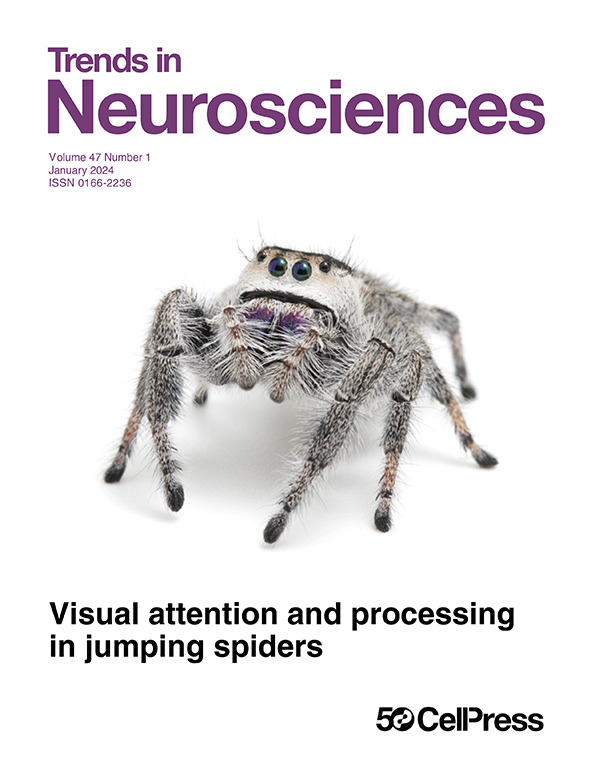ck2依赖性SK通道功能障碍是阿尔茨海默病中神经元高兴奋性的贡献者。
IF 15.1
1区 医学
Q1 NEUROSCIENCES
引用次数: 0
摘要
皮层和海马体的神经元高兴奋性代表了阿尔茨海默病(AD)的早期事件。在最近的一项研究中,Blankenship及其同事报道,在阿尔茨海默病小鼠中,腹侧被皮层(VTA)多巴胺神经元也具有高兴奋性,这种高兴奋性是由于酪蛋白激酶2 (CK2)依赖性SK通道功能障碍,这为阿尔茨海默病中异常神经元特性的潜在机制提供了新的见解。本文章由计算机程序翻译,如有差异,请以英文原文为准。
CK2-dependent SK channel dysfunction as contributor to neuronal hyperexcitability in Alzheimer's disease.
Neuronal hyperexcitability in the cortex and hippocampus represents an early event in Alzheimer's disease (AD). In a recent study, Blankenship and colleagues reported that in a mouse of AD, ventral tegmental area (VTA) dopamine neurons are also hyperexcitable, and this hyperexcitability is due to casein kinase 2 (CK2)-dependent SK channel dysfunction, adding new insights into the underlying mechanisms of aberrant neuronal properties in AD.
求助全文
通过发布文献求助,成功后即可免费获取论文全文。
去求助
来源期刊

Trends in Neurosciences
医学-神经科学
CiteScore
26.50
自引率
1.30%
发文量
123
审稿时长
6-12 weeks
期刊介绍:
For over four decades, Trends in Neurosciences (TINS) has been a prominent source of inspiring reviews and commentaries across all disciplines of neuroscience. TINS is a monthly, peer-reviewed journal, and its articles are curated by the Editor and authored by leading researchers in their respective fields. The journal communicates exciting advances in brain research, serves as a voice for the global neuroscience community, and highlights the contribution of neuroscientific research to medicine and society.
 求助内容:
求助内容: 应助结果提醒方式:
应助结果提醒方式:


